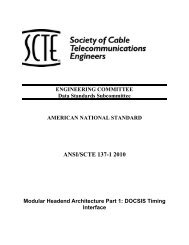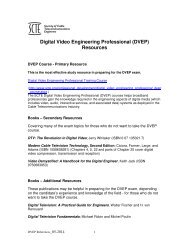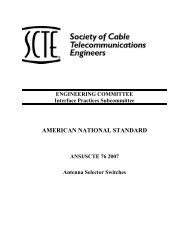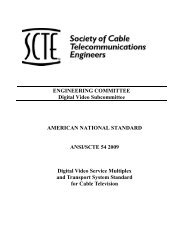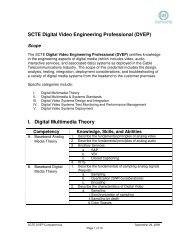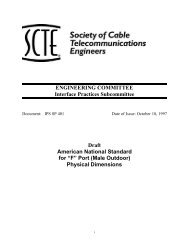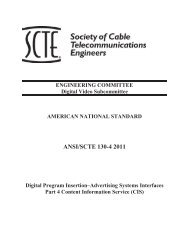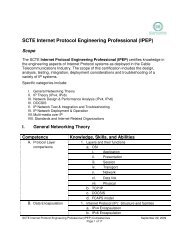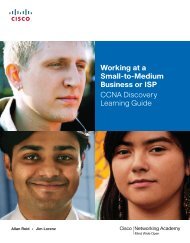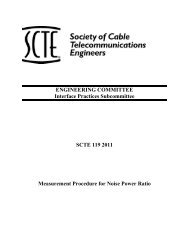SCTE IPS Template, Rev 2
SCTE IPS Template, Rev 2
SCTE IPS Template, Rev 2
- No tags were found...
Create successful ePaper yourself
Turn your PDF publications into a flip-book with our unique Google optimized e-Paper software.
First, we expect the device to exhibit a ‘weakly non-linear’ characteristic, meaning that the inputsignal levels are small enough as to not cause a measurably large change in the average levels ofthe voltages and currents of the device. (This is what was previously meant by, “the signalsource voltage(s) across the junction are ‘not too large’.”) In this case, only the first three (3)terms of the expansion are considered significant, thus simplifying our final expression for crossmodulation. The only terms considered then, are those associated with the linear gain (i.e. k 1 )and those associated with the slopes of the second and third order transfer characteristics (i.e. k 2and k 3 , respectively). Note that these terms do not contain any time dependencies.Therefore, they do not impart any phase dependencies onto the result.Second, we consider the input signal as comprised of a finite sum of equal amplitude sinusoids(i.e. we will consider a system that is of the Frequency Division Multiplexed (FDM) type, astypically found in analog cable telecommunications systems). This is expressed as:x(t) = Σ n A n cos(w C n t + θ C n ){A.2}where,w C n ≡ the individual radian frequencies of the channel carriers.θ C n ≡ the individual phases of the channel carriers (not necessarily equal).Third, we assume that all channels have the same (peak) amplitudes. Also, that if AMmodulation is present, it is the same on all channels. Therefore, A n are given by an amplitudemodulation expression, A(t), similar to the one presented in section 3.1.The derivation and parts of the following example are readily found in the literature and will notbe presented in full detail here, but the results will be used.12



